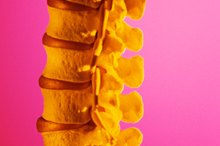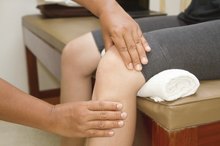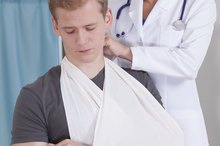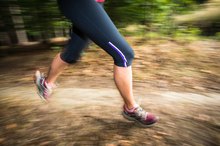Can You Do Situps After Hip Replacements?
Hip replacement surgery is a complicated procedure that is usually followed by a long rehabilitative period. Returning to normal daily activities following hip surgery can be a difficult process, especially if you were used to a highly active lifestyle. Exercises such as situps -- which incorporate the hip joint to execute -- will need to be avoided immediately after surgery. You will be able to do situps again with the help of physical therapy, however.
Immediately Following the Procedure
As the American Academy for Orthopaedic Surgeons suggests, hip replacement is a major reconstructive medical procedure that will prompt a temporary hospital stay. During this time you will be best-served to rest and allow your body to heal properly before returning to any type of exercise, especially situps. Following your procedure, however, your doctor will prescribe an immediate physical therapy treatment plan to be administered by a licensed physical therapist.
Early Therapy
Lumbar Laminectomy Rehabilitation Protocol
Learn More
In order to return to full hip strength that is required to complete exercises like situps, your physical therapy program will begin with smaller, less-strenuous strengthening exercises to combat muscle atrophy commonly seen in patients following surgery. According to the Vanderbilt Medical Center, this early post-op therapy will include manual stretches administered by your therapist to help stretch the muscles in your hip and prevent the joint from "freezing" due to inactivity and swelling. You will also begin range of motion, or ROM, movements like hip-and-ankle slides or hip flexion.
A Long Process
The therapy process for hip replacement procedures can be long and strenuous. Normal hip movements like straight leg raises or walking will not take place for at least six weeks following hip replacement surgery. As such, performing exercises like situps will not be allowed by your therapist for a minimum of two months following your procedure. Instead, your therapy will focus more on strengthening your leg and hip muscles to ultimately support your body weight during normal walking or standing activities.
- The therapy process for hip replacement procedures can be long and strenuous.
- Normal hip movements like straight leg raises or walking will not take place for at least six weeks following hip replacement surgery.
Resuming Situps
How Long Does it Take to Rehab From Meniscus Surgery?
Learn More
As you begin to regain your strength and flexibility in your hip joint, you will be able to eventually return to full daily activity which can include situps. The timeframe of your healing and strengthening process may differ from that of another patient -- especially when considering pain threshold. The Vanderbilt Medical Center suggests that patients can return to full activity roughly 12 weeks after the procedure.
Related Articles
References
- AAOS.org: Activities After Hip Replacement
- Chang WD, Lin HY, Lai PT. Core strength training for patients with chronic low back pain. J Phys Ther Sci. 2015;27(3):619-22.
- Akhtar MW, Karimi H, Gilani SA. Effectiveness of core stabilization exercises and routine exercise therapy in management of pain in chronic non-specific low back pain: A randomized controlled clinical trial. Pak J Med Sci. 2017;33(4):1002-1006.
- Hsu SL, Oda H, Shirahata S, Watanabe M, Sasaki M. Effects of core strength training on core stability. J Phys Ther Sci. 2018;30(8):1014-1018. doi:10.1589/jpts.30.1014
- Hung KC, Chung HW, Yu CC, Lai HC, Sun FH. Effects of 8-week core training on core endurance and running economy. PLoS One. 2019;14(3):e0213158. Published 2019 Mar 8. doi:10.1371/journal.pone.0213158
- Huxel Bliven KC, Anderson BE. Core stability training for injury prevention. Sports Health. 2013;5(6):514-522. doi:10.1177/1941738113481200
- Reed CA, Ford KR, Myer GD, Hewett TE. The effects of isolated and integrated 'core stability' training on athletic performance measures: a systematic review. Sports Med. 2012;42(8):697-706. doi:10.2165/11633450-000000000-00000
- Sharrock C, Cropper J, Mostad J, Johnson M, Malone T. A pilot study of core stability and athletic performance: is there a relationship?. Int J Sports Phys Ther. 2011;6(2):63-74.
Writer Bio
Adam Fonseca has been a writer and blogger since 2005. He maintains a number of different blogs on a variety of subjects ranging from health care to golf. Fonseca has a Master of Health Administration degree from the University of Phoenix and degrees in health science and psychology from Bradley University.








